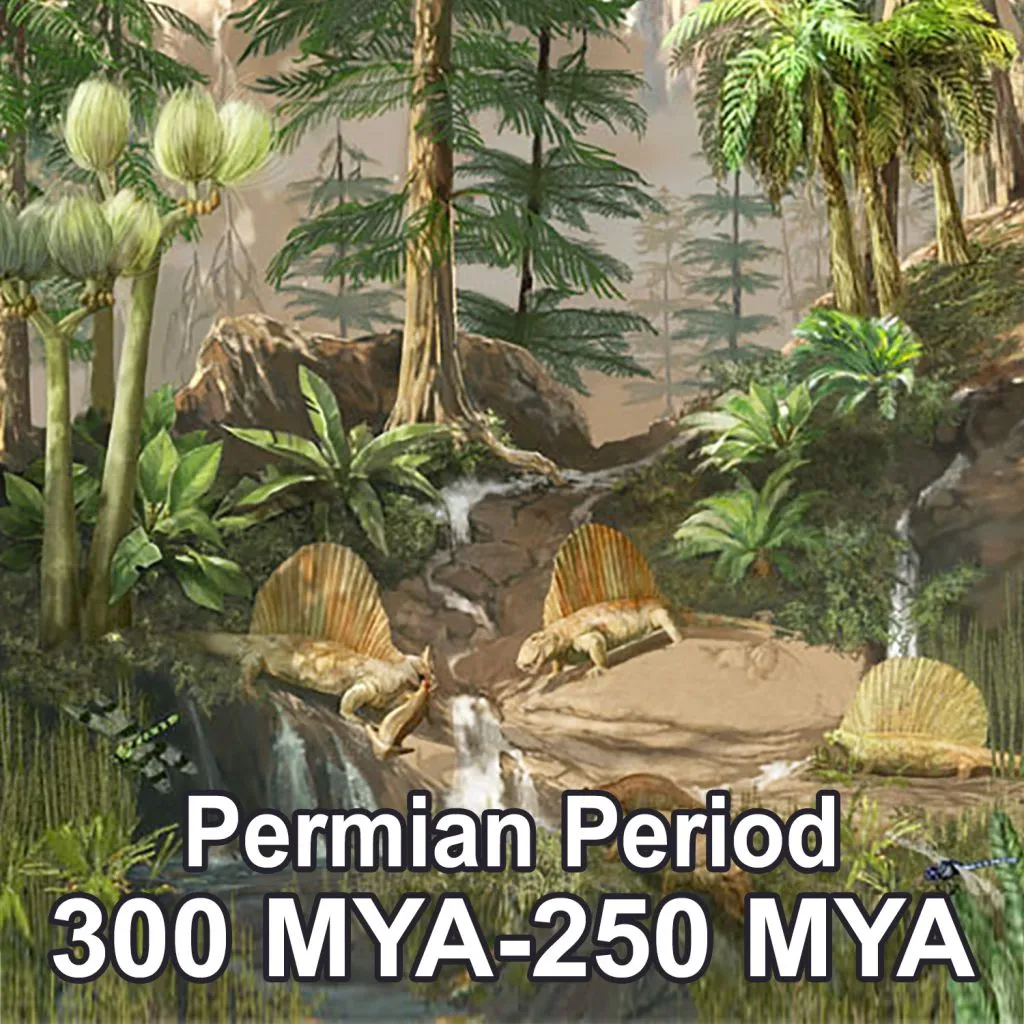
The Permian Period
The Permian is a geologic period and system which spans 47 million years from the end of the Carboniferous Period 298.9 million years ago (Mya), to the beginning of the Triassic period 251.902 Mya.
The Permian is the last period of the Paleozoic era, the following Triassic period belongs to the Mesozoic era. The concept of the Permian was introduced in 1841 by geologist Sir Roderick Murchison, who named it after the city of Perm.
The Permian witnessed the diversification of the early amniotes into the ancestral groups of the mammals, turtles, lepidosaurs, and archosaurs. The world at the time was dominated by two continents known as Pangaea and Siberia, surrounded by a global ocean called Panthalassa.
The Carboniferous rainforest collapse left behind vast regions of desert within the continental interior. Amniotes, who could better cope with these drier conditions, rose to dominance in place of their amphibian ancestors.
The Permian (along with the Paleozoic) ended with the Permian–Triassic extinction event, the largest mass extinction in Earth's history, in which nearly 96% of marine species and 70% of terrestrial species died out. It would take well into the Triassic for life to recover from this catastrophe.
The Permian ended with the Great Dying, the greatest extinction ever.
On land, ecosystems took 30 million years to recover.
Era: Paleozoic
Occurred: 298.9 (+/- 0.15) million years ago - 251.902 (+/- 0.024) million years ago
Mean surface temperature: c. 16 °C; (2 °C above modern)
Mean atmospheric O 2 content: c. 23 vol %; (115 % of modern)
Mean atmospheric CO 2 content: c. 900 ppm; (3 times pre-industrial)
Epochs:
- Cisuralian
- Guadalupian,
- Lopingian
Plants
Plant life consisted mainly of ferns and seed-ferns, with new plants like conifers and ginkgos coming into prominence. The Glossopteris flora predominating in Gondwanaland (the southern portion of Pangaea). It is gradually replaced by the seed-fern Dicroidium as the climate dries in the Late Permian.
Organisms
Two important groups of animals dominated the Permian landscape: Synapsids and Sauropsids. Synapsids had skulls with a single temporal opening and are thought to be the lineage that eventually led to mammals. Sauropsids had two skull openings and were the ancestors of the reptiles, including dinosaurs and birds.
Environment
Climates of the Late Permian (Lopingian) Epoch were typically hot and locally very dry. Deserts became widespread in various tropical and subtropical areas during this time. The orogenies that marked the assembly of Pangea strongly influenced both climate and life.
Mammals
Therapsids include mammals and other cynodonts. They form a subgroup of the Synopsida, one of the major branches of amniotes. Therapsids first appear in the Permian Period, during which they flourished and evolved into a number of mammal forms.














































